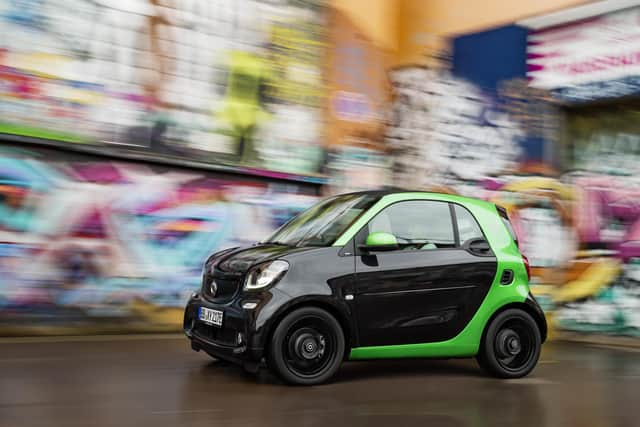The five cars learners are banned from using for their driving test
and live on Freeview channel 276
The body that oversees the UK driving test has updated its list of unsuitable vehicles, crossing another city car from the list of models learners are allowed to use on their test.
It’s a little known fact that the Driver and Vehicle Standards Agency (DVSA) has a black list of models banned from the practical driving test for safety reasons.
Advertisement
Hide AdAdvertisement
Hide AdIn most cases learners never need to worry about the list. The majority use their instructor’s car, which will be set up specifically for lessons and driving tests, so meet all the requirements.
However, some learners chose to sit their test in their own car, one borrowed from a friend or family member, or a rented vehicle. Generally, this isn’t a problem as long as it meets the basic criteria set out by the DVSA (see below). But some cars that meet these criteria are still banned from the driving test due to issues with visibility.


The Smart ForTwo was recently added to the DVSA’s list of banned cars, joining the BMW Mini convertible; Ford KA convertible (StreetKa); Toyota iQ and Volkswagen Beetle convertible.
In each case, the DVSA won’t let learners use these because their design doesn’t offer the examiner all-round visibility.
Advertisement
Hide AdAdvertisement
Hide AdThese bans are based on examiner experiences and the agency emphasises that other cars may also be unsuitable. It advises anyone with doubts about the suitability of a car to check with it before attending a test. In particular, you should check if you intend to use a convertible; panel van or coupe.
There are also several models affected by safety recalls which you can’t use unless you have proof that the recall was carried out. These include the Citroen C1, Toyota Aygo and Peugeot 108 built between 9 Sep 2014 and 15 Oct 2014, which were recalled for a steering failure; Toyota Yaris built between June 2005 and May 2010, which suffered track seat and/or steering column problems and the Vauxhall Adam and Corsa D, which suffered potential steering issues.


As long as you can supply official proof that your car had the recall work or didn’t require it, you will be allowed to use it.
There are other requirements for using your own car for your driving test and failing to meet them could see your examiner cancel the test without you even starting the engine.
To use your car for the driving test it must:
- be taxed
- be insured for a driving test (check with your insurance company)
- be roadworthy and have a current MOT (if it’s over 3 years old)
- have no warning lights showing, for example, the airbag warning light
- have no tyre damage and the legal tread depth on each tyre - you cannot have a space-saver spare tyre fitted
- be smoke-free - this means you cannot smoke in it just before or during the test
- be able to reach at least 62mph and have an mph speedometer
- have 4 wheels and a maximum authorised mass (MAM) of no more than 3,500 kg
Advertisement
Hide AdAdvertisement
Hide AdIt must also include an extra interior rear-view mirror for the examiner; L-plates; a passenger seatbelt and a proper passenger head restraint.
In addition, Covid safety rules mean that in England and Wales, you should tidy your car before your test. This includes removing any rubbish or unnecessary items from the dashboard, footwells, door pockets, cup holders and seats.
In Scotland, the rules are stricter and you must also clean and wipe down the dashboard and car controls, and make sure the passenger seat and footwell are not dirty. The car you use for your test must have at least one window open on each side throughout the test. If your car doesn’t meet these requirements your test will be cancelled.
Recently one learner in Lancashire was refused a test because the examiner found pencil eraser shavings in the passenger footwell of their instructor’s car.
